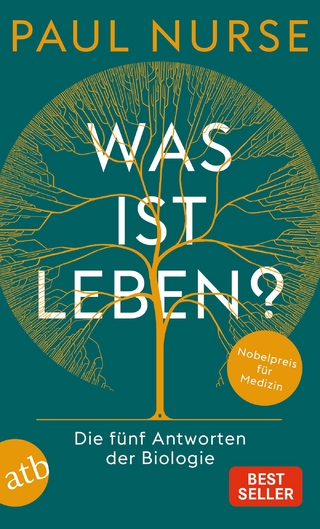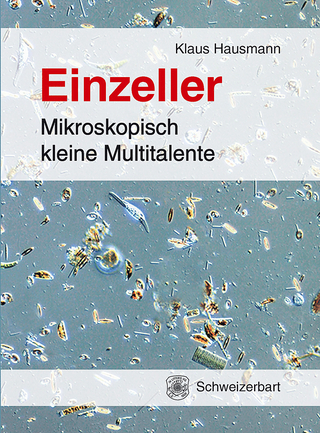
Cells in Evolutionary Biology
CRC Press (Verlag)
978-0-367-65723-9 (ISBN)
This book is the first in a projected series on Evolutionary Cell Biology, the intent of which is to demonstrate the essential role of cellular mechanisms in transforming the genotype into the phenotype by transforming gene activity into evolutionary change in morphology. This book —Cells in Evolutionary Biology — evaluates the evolution of cells themselves and the role cells have been viewed to play as agents of change at other levels of biological organization. Chapters explore Darwin’s use of cells in his theory of evolution and how Weismann’s theory of the separation of germ plasm from body cells brought cells to center stage in understanding how acquired changes to cells within generations are not passed on to future generations.
Chapter 7 of this book is freely available as a downloadable Open Access PDF under a Creative Commons Attribution-Non Commercial-No Derivatives 3.0 license. https://s3-us-west-2.amazonaws.com/tandfbis/rt-files/docs/Open+Access+Chapters/9781315155968_oachapter7.pdf
Brian K. Hall, University Research Professor Emeritus at Dalhousie University, was trained in Australia as an experimental embryologist. His research concentrated on the differentiation of skeletal tissues, especially, how epithelial–mesenchymal signaling initiates osteogenesis and chondrogenesis through the formation of cellular condensations. These studies led him to earlier stages of development and the origin and function of skeletogenic neural crest cells. Comparative studies, using embryos from all five classes of vertebrates provided a strong evolutionary component to his research. These studies, along with analyses of the developmental basis of homology, played significant roles in the establishing of evolutionary developmental biology. He is a Fellow of the Royal Society of Canada, Foreign Fellow of the American Academy of Arts and Science, and recipient of a Killam Prize. He was one of eight individuals awarded the first Kovalevsky Medals in 2000 to recognize the most distinguished scientists of the twentieth century in comparative zoology and evolutionary embryology. Sally A. Moody, Professor and Chair of the Department of Anatomy and Regenerative Biology at George Washington University, received her PhD in Neuroscience during which she studied motor axon guidance cues in the trigeminal system of the chick embryo. Throughout her career, she has continued her interest in understanding the mechanisms of axon guidance, studying the role of lineage factors in Xenopus, extracellular matrix proteins in chick, and genetic mutations in mouse. As a postdoctoral fellow, Sally was introduced to Xenopus embryos, which has remained a favorite. She made extensive fate maps of cleavage stage Xenopus embryos, identified maternal mRNAs that contribute to neural fate, elucidated proteomic and metabolomic changes that occur within specific lineages during cleavage, and demonstrated lineage influences on the determination of amacrine cell fate in the retina. Currently, her laboratory is studying the gene regulatory network that stabilizes neural fate downstream of neural induction, and identifying novel factors that are required for cranial sensory placode development. Dr. Moody has served on several editorial boards in the fields of neuroscience and developmental biology, on the board of directors of several societies focused on developmental processes, and edited the books: Cell Fate and Lineage Determination and Principles in Developmental Genetics.
The role and autonomy of cells in phylogeny and evolution circa 1840-1865. Germ plasm theory and cells in evolutionary biology. The discovery of genes and the rise of genetics from 1900 in usurped cells in evolutionary biology. The study of cells, embryos and evolution through identification of cell lineages. Experimental embryology, nuclear or cytoplasmic control of development. Cytoplasmic inheritance in protozoans and divergent evolution of prokaryotes and eukaryotes. Structural (TEM) analyses of cells: evolution of cells, organelles and cell number. Recognition of the Archaea, different relationships and kingdoms of life. Cellular condensations, modularity and evolution of the phenotype.
| Erscheinungsdatum | 06.04.2021 |
|---|---|
| Reihe/Serie | Evolutionary Cell Biology |
| Verlagsort | London |
| Sprache | englisch |
| Maße | 156 x 234 mm |
| Gewicht | 589 g |
| Themenwelt | Naturwissenschaften ► Biologie ► Zellbiologie |
| Naturwissenschaften ► Biologie ► Zoologie | |
| ISBN-10 | 0-367-65723-6 / 0367657236 |
| ISBN-13 | 978-0-367-65723-9 / 9780367657239 |
| Zustand | Neuware |
| Haben Sie eine Frage zum Produkt? |
aus dem Bereich


